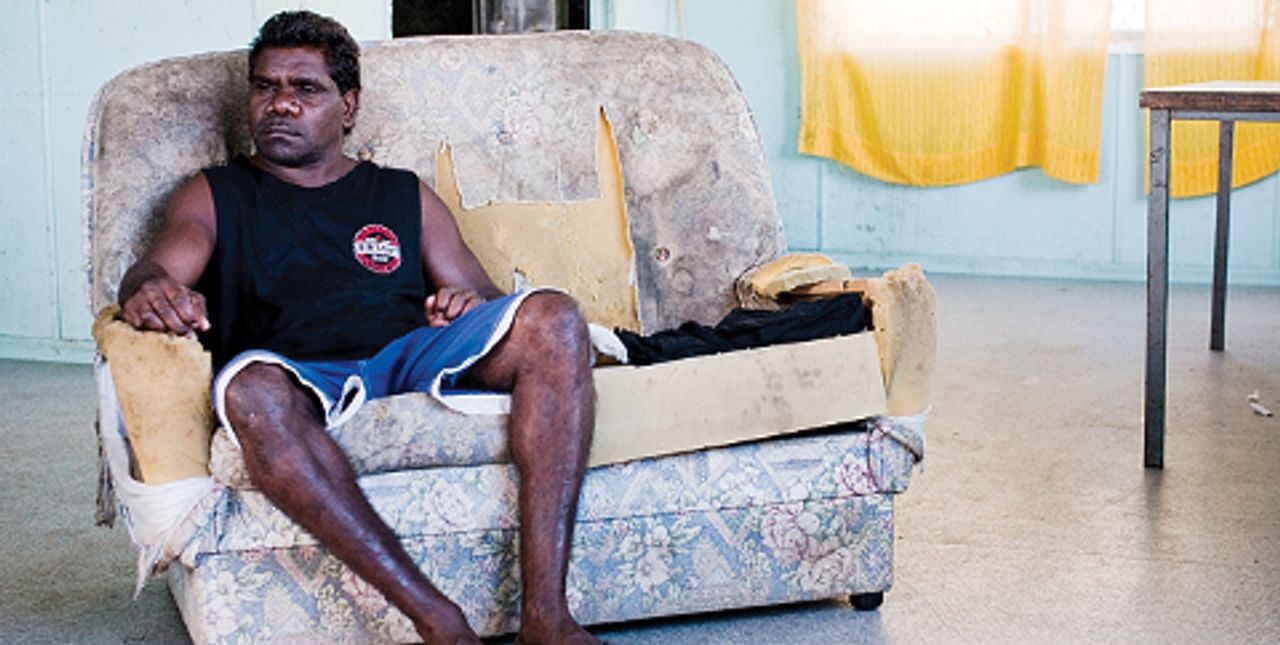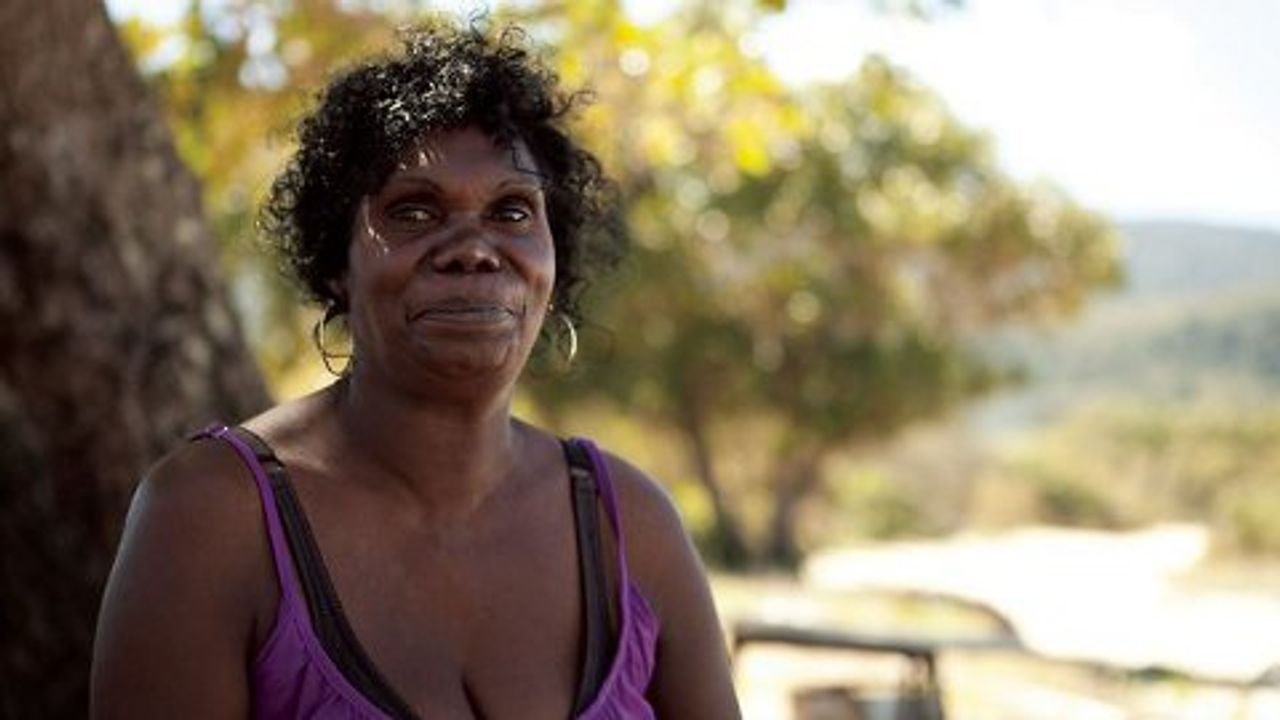The Tall Man is a skillfully produced documentary from Australian director Tony Krawitz about the death in police custody of Aborigine Cameron (“Mulrinji”) Doomadgee, 36, on Queensland’s Palm Island in November 2004. Denied wide play in cinemas, it was recently screened on Australia’s SBS television, and can be viewed or purchased online.
Doomadgee died a painful death on the floor of a police cell on the island, a former penal institution for Aboriginal people, less than an hour after being locked up, for no good reason, by Senior Sergeant Chris Hurley (the “tall man”) on a charge of “causing a public nuisance”.
After an altercation with Hurley on arrival at the police station, Doomadgee died of massive internal bleeding. His liver had been torn in half, his spleen ruptured, his face bruised and four ribs broken. His injuries were only comparable to those that would be suffered in a serious car or plane crash.
According to another Aboriginal prisoner, Roy Bramwell, who was a witness, Hurley repeatedly punched a prostrate Doomadgee before dragging him into a cell. When, however, Hurley was eventually charged with manslaughter, the first police officer in Queensland to be tried for the death of an indigenous person, Bramwell was not called to testify.
 Roy Bramwell
Roy BramwellDespite two coroners’ reports, which both concluded that Hurley assaulted Doomadgee, and a Queensland Crime and Misconduct Commission inquiry, which condemned the police investigations of the death as lacking in “integrity”, not a single person has been held accountable.
The film carefully sets out the essential facts, interwoven with witness accounts. There is no narrator. Instead, the audience is left to draw its own conclusions. We see the concocted police re-enactment of the events, video-taped a day after the death. The tape includes Bramwell’s compelling account of Hurley assaulting Doomadgee, with Hurley’s “elbow going up and down three times,” and Hurley saying, “Have you had enough, Mr Doomadgee? Do you want more, Mr Doomadgee? Do you want more?”
Missing, however, is the video surveillance film of Doomadgee dying in agony and calling out for help. For undisclosed reasons, publication of the footage was suppressed by the state coroner’s office. The video, which was screened in court, showed a police officer kicking Doomadgee in the head to ascertain whether the prisoner was still alive.
Visually, the film captures the natural splendour of Palm Island, on the edge of the Great Barrier Reef, alongside the residents’ deep-seated poverty and social deprivation. Palm Island has more than 2,500 residents crowded into about 200 houses. After decades of abuse, neglect and chronic under-funding, the unemployment rate exceeds 90 percent.
One of the strongest features of the documentary is that it allows Doomadgee’s loved ones and other Palm Island residents to speak for themselves, and to talk about Doomadgee as a living person—a father, partner, brother.
 Elizabeth, Cameron Doomadgee's sister
Elizabeth, Cameron Doomadgee's sisterNo one could fail to be impressed by the sorrow, dignity and determination of Doomadgee’s partner of 10 years, Tracey Twaddle, and his siblings, Elizabeth, Jane, Valmore and Lloyd. They recount their lives with Doomadgee, their shock at his death, and their outrage at the ensuing cover-up. “We had a simple but happy life together” and “he’s never far from my mind,” Twaddle says in her statement, delivered at Hurley’s trial, which she re-reads at the conclusion of the film.
The most painful segment of the film deals with the apparent suicide of Doomadgee’s son Eric, who was just 16 when his father was killed. A television interview with Eric shows a forthright but tormented young man, angered by the official whitewash. He recounts his “good times”, hunting and joking with his father. Thinking of his father’s death made him “go all hollow inside.” He was later found hanging from a tree, 19 months after his father’s death.
The film documents how the delayed release of a coroner’s report, a week after Doomadgee died, revealing the cause of death, provoked a spontaneous riot and the burning down of the local police station. It has graphic scenes and accounts of the subsequent arrival of heavily-armed police, who raid homes and make multiple arrests at gun-point. Unlike Hurley, who has not spent a day in prison, scores of residents were arrested on “riotous assembly” and other serious charges.
The documentary provides only glimpses of the state Labor government’s vehement backing of the police from the outset. It was the government that authorised the police to invoke emergency powers and laid the basis for the ensuing witchhunt against the residents.
Premier Peter Beattie again sprang to the defence of the police in 2006, when Deputy State Coroner Christine Clements found that Hurley had “caused the fatal injuries” by hitting Doomadgee a number of times while he was on the floor, and then dragging him, unconscious, into a cell. Clements ruled that Doomadgee’s arrest had been “completely unjustified” and said it was “reprehensible” that the police investigations were “so obviously lacking in transparency, objectivity and independence.”
Beattie, however, lauded the state police as “one of the best police services in the world”. He strongly backed a decision by the Director of Public Prosecutions not to charge Hurley despite Clements’s findings. Police reinforcements were called in to suppress protests by furious Aboriginal people.
Within days, Beattie was forced by the resulting political outcry to call in a former judge, Sir Laurence Street, to review the case. The announcement of the review was hailed by various indigenous leaders as an historic “victory”. In reality, it provided a political safety valve.
As a result of Street’s review, Hurley was placed on trial for manslaughter in 2007, but based on a diametrically different assessment of the events than in Clements’s report. The trial centred on the claim that Hurley must have kneed Doomadgee while falling on top of him. This scenario opened the door for the police sergeant to switch his story (he had initially insisted that he had fallen beside Doomadgee), and concede that his knee must have struck Doomadgee, but only “accidentally”. Hurley was acquitted on that basis.
A second inquest by Deputy Chief Magistrate Brian Hane concluded that Hurley had lied and fabricated evidence. Hane described Hurley’s initial denial that he had fallen on top of Doomadgee as a “calculated and tactical stratagem” to avoid being suspected of inflicting the blow to the prisoner’s stomach. Yet Hane ruled—largely because Hurley’s collusion with the police investigators had “substantially compromised” the evidence—that there was “simply no evidence” that Hurley intentionally applied the force that killed Doomadgee. The coroner delivered an open finding, effectively leaving Hurley free of criminal responsibility.
One incongruity stands out in the film. On the one hand, it shows scenes of the threatening police protests that erupted in response to Clements’s initial findings. Police held rallies across the state, voted no confidence in the government, and vowed to march on parliament if Hurley were sent to trial based on the coroner’s report.
On the other hand, the documentary presents Hurley simply as a flawed individual, known as a “good cop” for previous work in indigenous communities, but possibly prone to angry response to challenges to his authority. The documentary’s production notes present the key issue as: “Was he like a character from Conrad’s Heart of Darkness, addicted to his own power? Or was he a good man trying to change things in an unjust world?”
This approach, which the WSWS discussed in an interview with director Tony Krawitz, diverts from the systemic roots of the ongoing repression of Aboriginal people.
Over the past two centuries, Australia’s indigenous people have been driven off the land through massacres and poisonings, and suffered state violence, with the sanction of the legal and political establishment. The few official investigations that have taken place, have invariably whitewashed these crimes. A royal commission established by the Hawke government reviewed 99 deaths at the hands of police and prison authorities during the 1980s, but not a single officer was charged with any offence. It was a green light for continued deaths in custody.
By providing images of the poverty and lack of basic facilities on Palm Island, the documentary points to the connection between the social conditions that indigenous people, and wider layers of the working class, face and the kind of injustice that is so blatant in the killing of Cameron Doomadgee.
The author also recommends:
An interview with Tony Krawitz, director of The Tall Man
“It is an important story about justice in this country”
[5 March 2012]
Cover-up of Palm Island Aboriginal death continues
[24 June 2010]
Australia: Aboriginal death in custody triggers Palm Island riot
[3 December 2004]
Australia: Palm Island’s dark history of Aboriginal repression: Part One
[1 March 2005]
Australia: Palm Island’s dark history of Aboriginal repression: Part Two
[2 March 2005]
